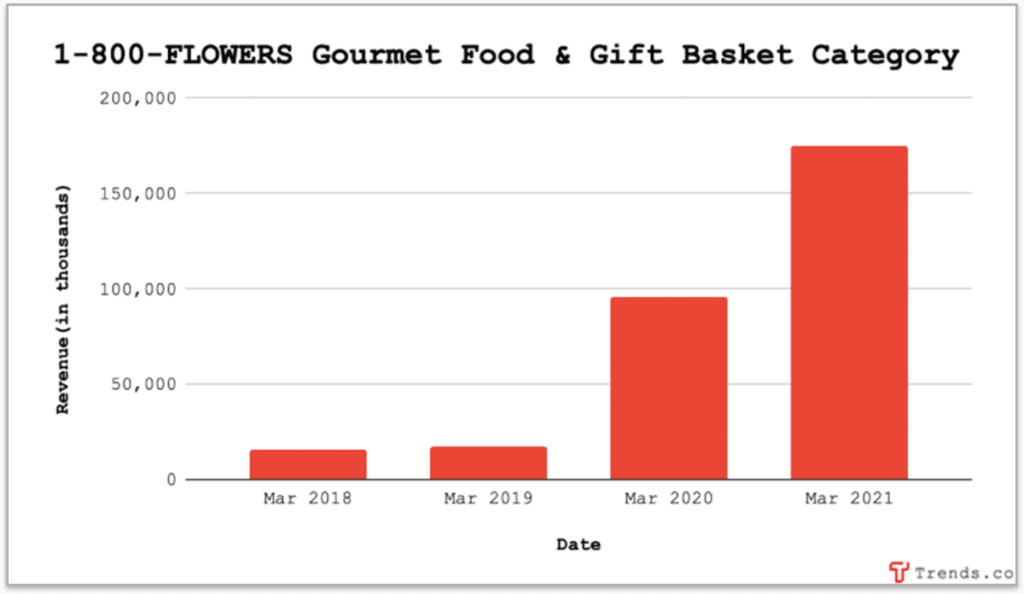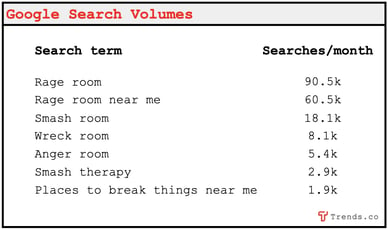nlopchantamang.com
Flares: Herbalism and Gifting
Amy McMillen

Herbalicious (So Delicious)
What’s better than plant care and self-care at the same time? Functional leaves and roots from all over the world are gathering attention for their healing properties.
Because many flowers and herbs are indigenous to certain places, it takes time to spread from their place of origin to other cultures. For example, hibiscus recently broke out as the latest floral star in the US, while still maintaining ~5x more search interest in Uganda.

Herbs that are popular in one part of the world can create opportunities in others, including:
- Adult study abroad: When the world opens up, consider organizing educational tourism based on local, indigenous herbs (this plants-as-medicine course in Costa Rica is sold out for May). For now, take advantage of teaching global apothecary lessons from the home. The Herbal Academy, offering online courses ranging from $300 to $3k each, has taught 100k+ students and has 400k+ Instagram followers.
- Self-care: Create wanderlust-inspired self-care bundles with these herbs from around the world sprinkled across teas, functional latte pods, candles, and bath kits. Check out this post on r/herbalism about using rose, chamomile, and Epsom salts to soothe vaccine aches.
- Databases: As herbalism continues to get mainstream, people will be searching for easy-to-navigate, trusted information on fact vs. fiction. For example, this Chinese herbal medicine database organically gets 15.3k clicks/mo, per Keywords Everywhere. Do the same for other functional herbs indigenous to other cultures around the world, adding an interactive map (take inspiration from this tea blog) and marketplace.
Don’t forget the boozy tea space either -- infuse these herbs in seltzers, beers, and kombuchas, and they’re perfectly positioned as post-workout refreshers.
Gifting Keeps On Giving

Two months ago, we highlighted strategies 1-800-FLOWERS uses to diversify its revenue.
The gifting company attributed their record-breaking 2020 year to a significant increase in people recognizing "the need to connect and express themselves to the important people in their lives.”
The act of giving presents is still going strong, and others have recognized the importance of showing appreciation as well.
A recent player is Goody, a gifting app that raised $4m and sent 10k gifts within its first 2 months of launching. Goody makes gifting super easy -- all you need to know is the recipient’s phone number.
Co-founder Edward Lando, serial entrepreneur and startup investor, said that the app serves as an additional acquisition channel for early D2C brands and a “giant shopping mall” for Gen Z consumers.
If Goody wants to be a one-stop D2C marketplace for younger generations, appeal to other audiences with different tastes. Some options:
- Elevate Etsy by creating local (or global) shopping experiences for handmade goods.
- Cater to environmentalists and only feature brands where everything is zero waste or sustainable.
- Partner with local thrift stores and build an app for gifting unique, one-of-a-kind objects.
- Lean into the Millennial-coined “Experience Economy” and create a marketplace for gifting experiences. Differentiate from Airbnb Experiences by partnering with D2C pop-up events, or corporate events for client-focused companies like sales, consulting, or banking.
For existing business owners and operators, consider adding a seamless gifting feature to your product or service. Learn from DoorDash, Tinder, and Lyft, and step it up from a gift card to make it more personalized or practical.
If you’re technical, go B2B and create an API like GiftRocket, but bake in features like Caroo’s 60-second quiz to help businesses curate recommendations for gift-seekers.


Leave a Comment